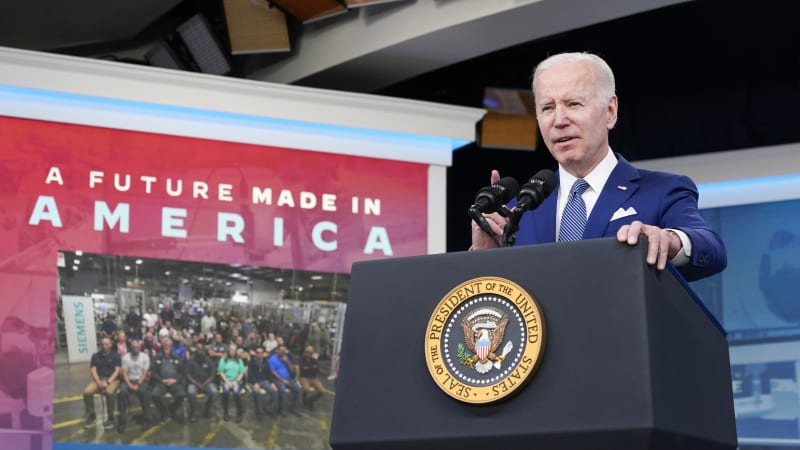Biden's Buy American rules mandate 75% U.S.-made content

This month, the White House explained what’s in the final rulemaking for President Biden’s Buy American initiative. The president signed his Made in America executive order last summer, which would strengthen the provisions in already existing Buy American legislation after a six-month review of changes needed in the current laws and in government procurement processes. The goal is to be able to compel more domestically made content in products the federal government buys, and have the tools to enforce compliance. The current rules require good and services purchased by the federal government to contain 55% U.S.-manufactured content, but the content rules are self-certified by the supplier. The new rulemaking would raise the domestic content percentage to 60% in October 2022, 65% in January 2024, and 75% in January 2029. Biden said the new rules will also give the government the ability to follow the manufacturing trail and ensure compliance.
Furthermore, the rulemaking includes a provision for “enhanced price preferences,” meaning the government agency requesting a good or service would apply a percentage-based tax on foreign supply contracts. That would help U.S. contractors when deciding who’s offering the lowest price. Given a better chance to compete with suppliers who have much lower labor and resource costs, Buy American wants to return some of the 5 million manufacturing jobs that have left the U.S. since 2000.
The seven-year ramp-up gives affected companies time to figure out or create new supply chains. It’s not clear which sectors will be most affected; the list of critical products and industries will come in a separate rulemaking phase laying out what “will be critical to America’s economic security and national security,” but items identified so far have been semiconductor ships, pharmaceuticals, and “advanced batteries” for electric vehicle batteries. The Office of Management and Budget now has a Made in America office, the Small Business Administration’s contracting division now has a department dedicated to domestic manufacturing, and the National Institute of Standards and Technology will use its Hollings Manufacturing Extension Partnership to help small-to-medium enterprises make the changes they need and connect with government procurement offices.
The U.S. government spends nearly $600 billion per year just on contracting services, according to the administration, although that can fluctuate wildly. Biden said the U.S. spent $3 billion on foreign construction contracts for defense in 2018. On the purchasing side, where similar sums are spent, GM and Ford are already eying their supply chains thanks to the current crises, and will be interested in Biden’s new provisions as heavy providers of government fleet vehicles. The government is said to have spent $300 million on foreign engines and vehicles alone in 2018.





